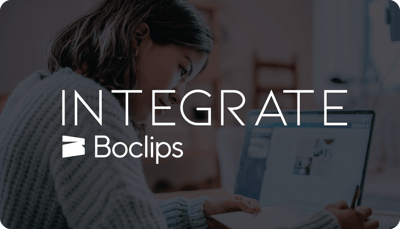Social-emotional learning (SEL) means the ability to develop the skills to process and manage feelings and reactions. SEL is an essential part of developmental maturity for both education and adulthood. Understanding and developing SEL can help people of all ages thrive personally and professionally.
We’ve curated five SEL videos for kids to help recognize the challenges of SEL and to help teach best practices for developmental learning. These educationally appropriate videos can help teach children of all ages to establish the basics for SEL.
Educators get free access to Boclips Classroom to share these videos directly with students in an ad-free, distraction-free platform.
Learning through song
In “Growth Mindset Song for Students,” students are taught how to train their brains and the best ways to develop a growth mindset. This short four-minute SEL video teaches kids to embrace challenges and learn from mistakes by using positive and empowering language with themselves and others.
Educate children through songs about the importance of hard work and how practice leads to improvement and intelligence. This SEL video teaches kids to take one step at a time and ways to stay determined in order to reach goals.
Problem-solving solutions
Every day, young people face problems with friends, family, and schoolmates. This SEL video shares five strategies to help kids resolve the problems they face in a safe and appropriate way. Children are taught that hitting is not a way to solve a problem and that fights can be avoided when they use their words to talk about the problem.
This video, “Get Along Monsters: 5 Ways to Work Things Out (Without Fighting),” demonstrates how blaming someone else for a problem doesn't resolve the problem, but asking questions can lead to a satisfactory resolution for everyone involved. The SEL video also shows that you can have different ideas to resolve a conflict. Also, it teaches that when there's a problem that's too difficult to solve, you can always ask a grown-up for help.
Mindful meditation for stress relief
In this two-part video series titled "Peace and Quiet," the speaker from Can Do U introduces the concept of mindfulness and guides viewers through a mindful meditation practice. The speaker highlights the inevitability of stress in life and emphasizes the importance of actively managing it.
Mindfulness is described as a tool to relieve stress, improve mental health, enhance sleep, and increase the ability to stay calm in stressful situations. You’ll hear about common misconceptions about mindfulness and assurances that it is a normal and accessible practice that can be done anywhere. This SEL video provides kids with a mindfulness practice, including maintaining complete silence, closing the eyes, and fully engaging in the exercise and will be guided through a breathing exercise, body scan, and counting breaths.
Naming and responding to emotions
In “Emotions for Kids: Naming and Responding,” kids are taught to identify various emotions and how to identify emotions in themselves. Students are given the tools to learn how to respond to those emotions. Other social emotional educational advice in this video include:
- Understanding the concept of emotions and how they affect us
- Recognizing and identifying different emotions in ourselves and others
- Understanding the difference between positive and negative emotions
- Learning healthy ways to respond to negative emotions
- Developing self-control and self-awareness in emotional situations
Conveying different feelings
Follow Rosie, Xixi, and Haha in “Pop Fox Theatre - Exploring Feelings - Happy, Angry, Sad Voices.” This SEL video for kids explores different feelings and how to use our voices and facial expressions to show emotions. Teach children how to identify and express happy, angry, and sad emotions.
Rosie, Xixi, and Haha share how to change their vocal pitch and speed of voice to convey different emotions. They teach how to practice speaking louder and quieter - and how to recognize and imitate different voices to channel various emotions. Use this video to educate students about how emotions can be portrayed through voice and body language.
Nora Kane
Senior Editing and Partnerships Associate Nora has a background in media production with a focus in education and language learning. She currently works on the Boclips Content Team where she edits videos, manages content partner relationships, and sometimes makes playlists.
- #Classroom
- #Video in Digital Learning
- #Educational Videos
- #Tips for Using Video
- #Video Content Partners
- #Boclips for Publishers
- #Issues in Education
- #Educational Videos by Subject Area
- #News and Announcements
- #Events & Holidays
- #Video and Teaching Tools
- #Teaching Methodologies
- #Education Videos
- #Video and Digital Literacy
- #Short Educational Videos
- #Instructional Design
- #Multimodal Learning
- #Video and Student Safety
- #Accessibility in Education
-3.png?width=390&height=223&name=Untitled%20design%20(2)-3.png)


.png?width=1152&height=660&name=Copy%20of%20Untitled%20Design%20(1).png)








